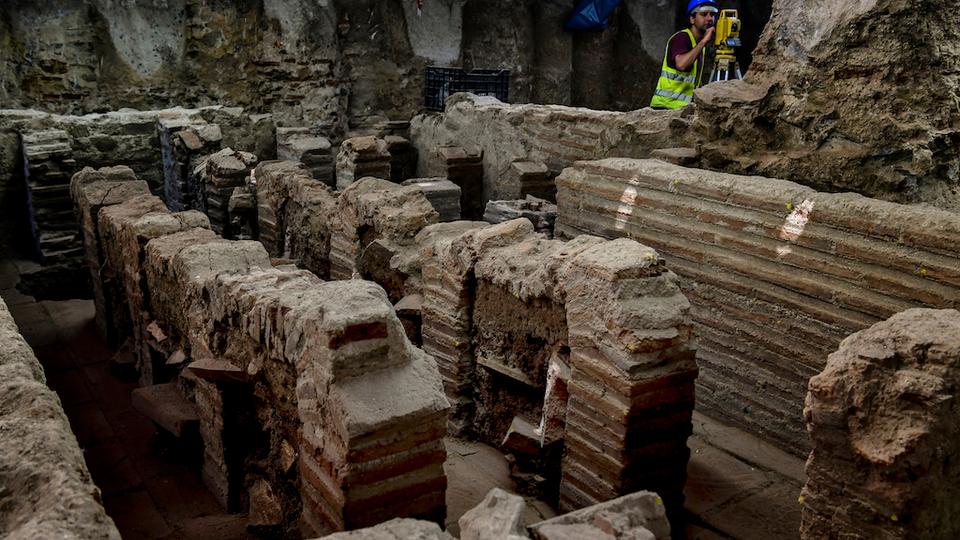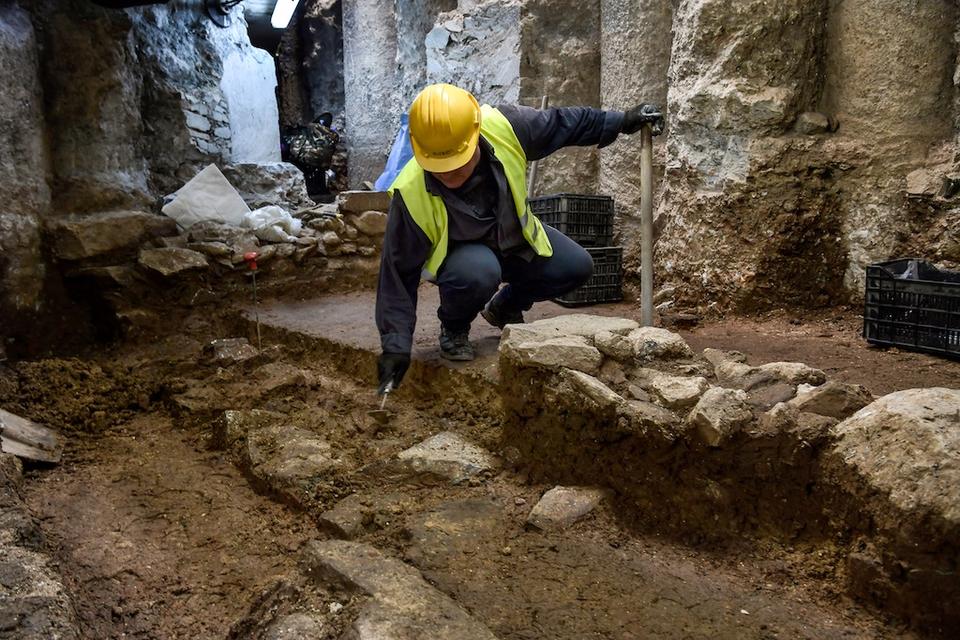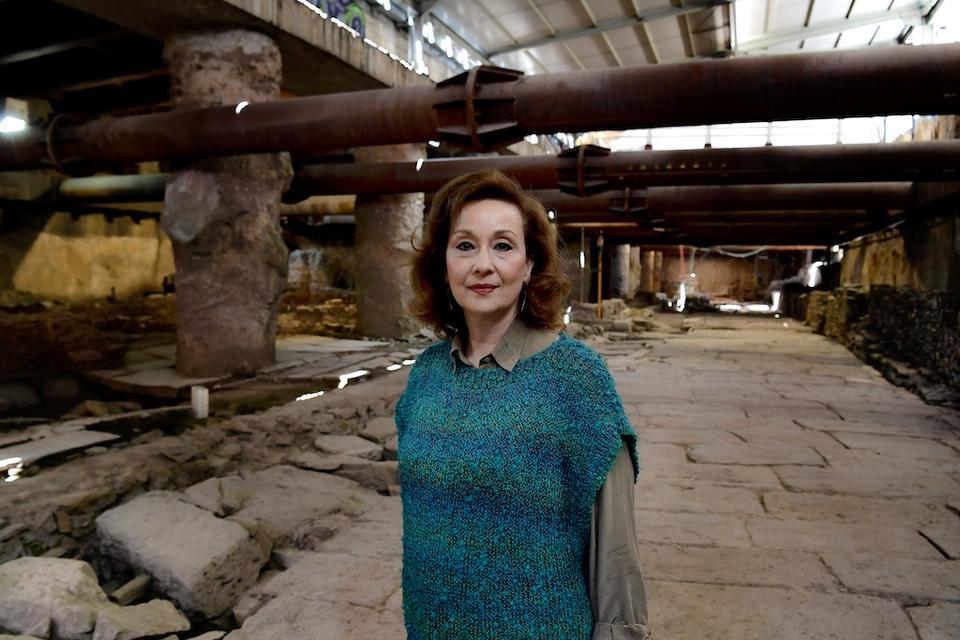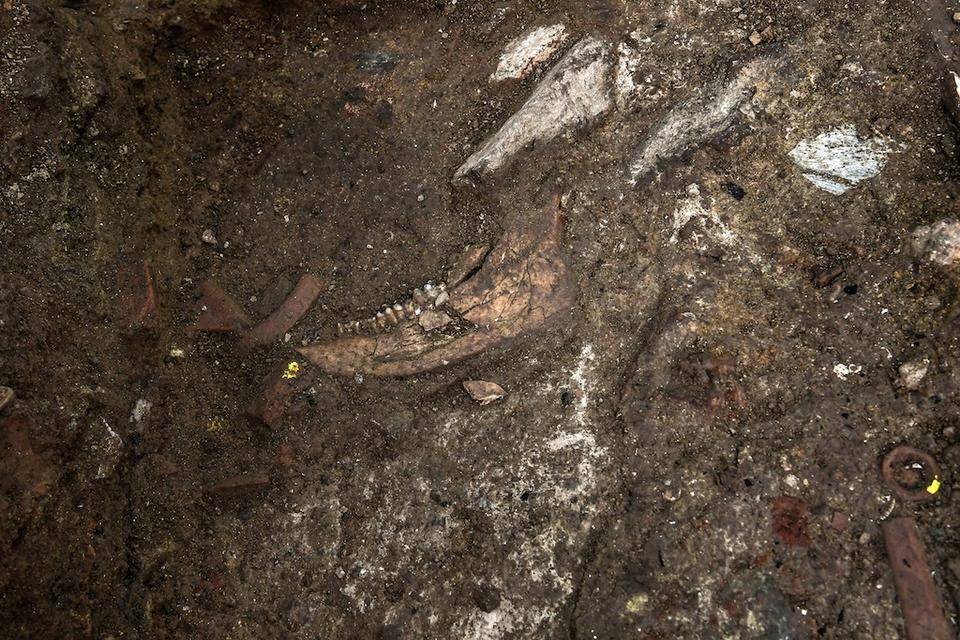


 Construction crews and archaeologists work on the excavation of an ancient site under the city centre of modern Thessaloniki, on April 25, 2018. (AFP)
Construction crews and archaeologists work on the excavation of an ancient site under the city centre of modern Thessaloniki, on April 25, 2018. (AFP) A man works on the excavation of an ancient site under the city centre of modern Thessaloniki, on April 25, 2018. (AFP)
A man works on the excavation of an ancient site under the city centre of modern Thessaloniki, on April 25, 2018. (AFP) Polyxene Adam-Veleni, head of the Thessaloniki antiquities ephorate, poses in front of the remains of a crossroads of the Decumanus Maximus, an ancient site under the city centre of modern Thessaloniki, on April 25, 2018 (AFP)
Polyxene Adam-Veleni, head of the Thessaloniki antiquities ephorate, poses in front of the remains of a crossroads of the Decumanus Maximus, an ancient site under the city centre of modern Thessaloniki, on April 25, 2018 (AFP) A piece of bone is pictured in the excavation of an ancient site under the city centre of modern Thessaloniki, on April 25, 2018. (AFP)
A piece of bone is pictured in the excavation of an ancient site under the city centre of modern Thessaloniki, on April 25, 2018. (AFP) Construction crews and archaeologists work on the excavation of an ancient site under the city centre of modern Thessaloniki, on April 25, 2018. (AFP)
Construction crews and archaeologists work on the excavation of an ancient site under the city centre of modern Thessaloniki, on April 25, 2018. (AFP)